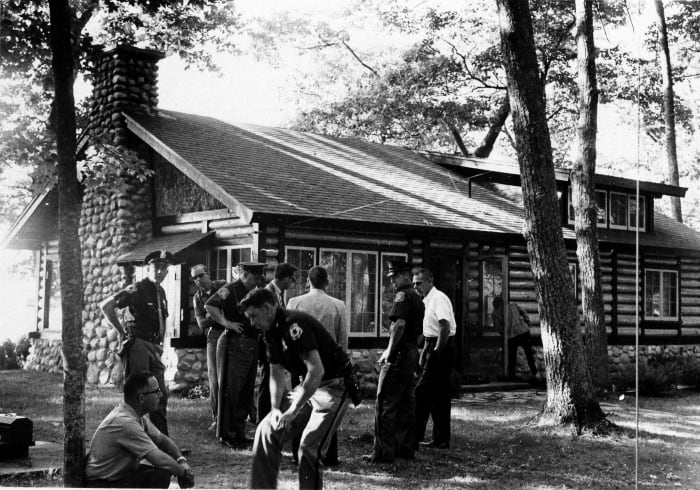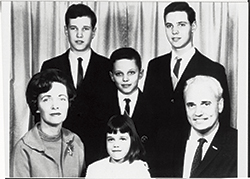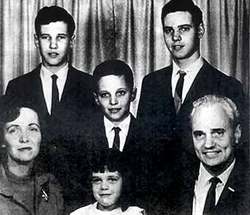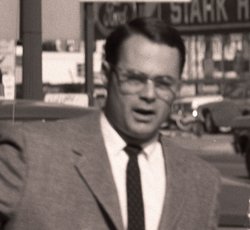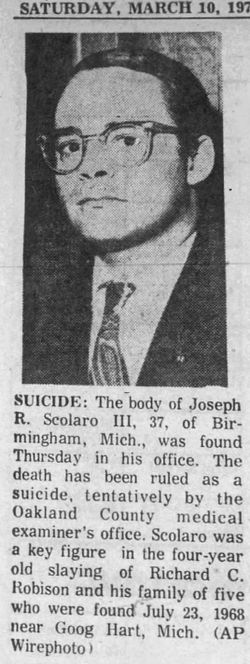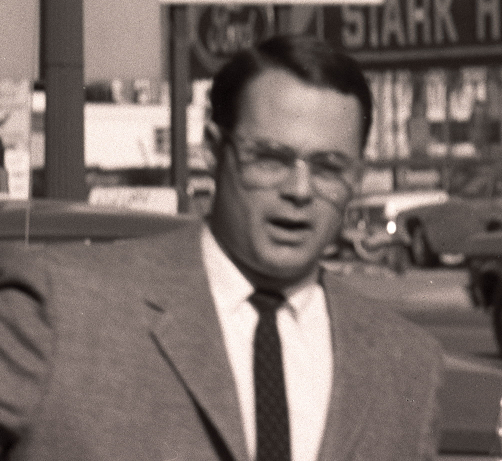I guess there are two possibilities :
1) It was planned that way by Scolaro to try and throw suspicion off him and make the crime look like a random sex-motivated attack.
2) Scolaro initially only intended to kill Richard Robison and then something went wrong or he was spotted by other family members and then once that happened he killed the rest of them to eliminate witnesses, and then staged the crime scene.
I suspect it's probably (2) given that the initial shots fired were on Richard Robison through a window into the cabin and then the rest of the family was executed with a different gun inside the cabin.
Good analysis. However, this case is full of mysteries and anomalies that makes it hard to fully comprehend and solve.
Besides Scolaro, several other potential suspects were also suggested and some investigated - among them: The cabin caretaker Chauncy Bliss, two ex-convicts Bloxum and Brock, Brother-in-law Marvin Fulton, Serial Killer Ed Edwards, the Zodiac, and Michigan Co-ed killer John Norman Collins, as well as possibly Mr. Robison himself.
For Scolaro to have carried out this crime alone would almost require superhuman abilities and inhuman personality traits. He would have needed a compelling reason to travel all the way up to a remote location - and back home, in a very short time frame, without being seen, and attempting to establish a strong alibi. And he would have had to have been absolutely cold blooded to have killed an entire family in such a manner.
Police initially stated that a total of 4 firearms were used, and yet only .22 and .25 bullets were found at the site and in the bodies. A single weapon with more substantial knock-down power would have been a better choice. And why would one person bring a total of four guns to the scene?
Unfortunately, none of those weapons were ever found or connected to the murders with a strong enough chain of evidence to convict anyone. The closest any of the ballistic tests came was to say that the shell casings from one of the guns (found at the scene) matched casings found at a shooting range that Scolaro was said (by whom?) to have used at one time.
The possibility exists that maybe Scolaro arranged the murders and hired professional killers to carry out the job. If that is the case, how did his ammunition and possibly his firearms become involved? Wouldn't a professional killer provide his own weapon(s)?
The use of a small caliber weapon like a .22 or .25 is often a choice of either a professional hitman or of a person ignorant of firearms. A larger caliber rifle or pistol, while much more effective, would have made a lot more noise and would have raised the possibility of a neighbor becoming alarmed. But if the killer(s) wanted to delay discovery of the scene, why turn up the furnace heat? Certainly confusing factors.
It is somewhat telling that Scolaro disposed of (claimed to have sold) his firearms so quickly and that they could not be located by investigators. Some summaries state that two of the Robinson boys may have been trying to get to a bedroom for a .22 rifle to use in defending the family, yet other summaries state categorically that no firearms were found at the scene.
Scolaro's suicide in 1973, as an investigation into him was heating up, is certainly a strong indication of his involvement, even though in his suicide note he denied killing the family.
The fact that a luggage tag bearing Mrs. Robison's name and address turned up in an abandoned car in Toledo, Ohio years later might indicate that there were, in fact, others involved in this mass murder, although it is truly a mystery as to how or why it turned up in the glove compartment of this car.
Another big question is: Why did it take so long for anyone to figure out that there was a problem at the Robison cabin? Suspicion might point to the caretaker/manager of those cabins - a strange person as some have pointed out. The heat in the cabin had been turned up full blast on 25 June 1968, which would have hastened decomposition of the bodies, and yet it was 22 July before the bodies were discovered. Nobody noticed the odor? Or didn't think it important enough to mention? And their car would have remained in one place, undriven - another clue.
Some case summaries state that robbery did not seem to be a factor, since some cash and Mr. Robison's ring were not taken. However, could there have possibly been a large amount of cash, papers, or valuables in that cabin? If the perpetrator(s) had time to re-arrange the bodies and stage the scene, perhaps they also had time to thoroughly search it as well. Shirley Robison's wedding ring was taken.
Was the murder of this whole family the objective? Or was it just something that occurred in an attempt to kill Mr. Robison and then eliminate witnesses? Or was the main target Shirley Robison? Or Susan?
The killing of little Susan by bludgeoning with a hammer was a totally cruel and violent act which set it aside from the other murders by firearm. And what of the sexual component of the crime regarding Mrs. Robison? And the theft of her wedding ring? This part of the story sounds very similar to the crimes attributed to John Norman Collins. Collins was a thief and burglar and he had accomplices in those crimes - and he knew Richie Robison personally. Perhaps only coincidence, but something to seriously consider.
Only five or six days after the murders of the Robisons, Joan Schell was abducted by three men in Ypsilanti, Michigan. One of those men was John Norman Collins. Joan's mutilated and decomposed body was found several days later.

